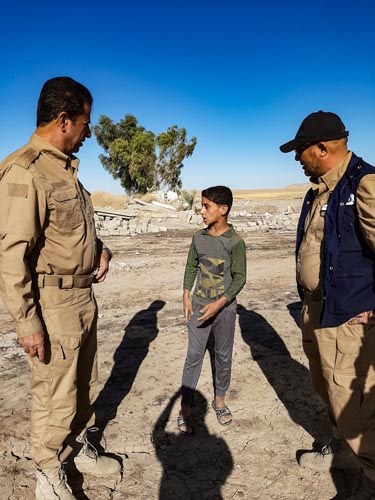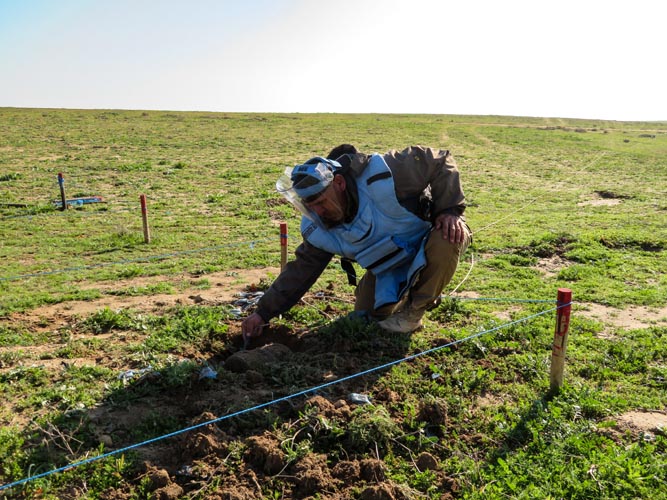For the past four years, FSD has worked at clearing mines from areas recently liberated from ISIS in central and northern Iraq. Most of the beneficiaries targeted by the program base their entire income on agricultural activities, which have stopped due to the ISIS insurgency and occupation. Fields were littered with improvised explosive devices used as an early warning system to channel security forces and to prevent individuals from fleeing their villages.
The immediate socio–economic effects of contaminated agricultural land include loss of income but also humanitarian aid dependency and ineffective coping strategies. Explosive ordnance contamination also constitutes one of the most important driving factors preventing people returning to their areas of origin.

FSD clearance teams have been removing explosive ordnance blocking valuable agricultural land, roads and water sources, to support the safe return of internally displaced people and to improve the living conditions of affected communities. Approximately, 5.5 millions square meters of agricultural area has been cleared. During this clearance, 8,658 improvised explosives devices and 358 unexploded ordnance were found and rendered safe.
Explosive ordnance clearance of agricultural land ensures access for communities that are highly dependent on farming as the main livelihood income source. Our teams ensure that mechanisms of communication with communities are in place to solve existing conflicts concerning access and to define priorities. FSD also targets access to agricultural infrastructure, such as irrigation canals.
Improving access to agricultural land helps to rebuild functional employment opportunities and markets by restoring supply chains in disrupted communities, therefore increasing long-term food and nutrition security.



